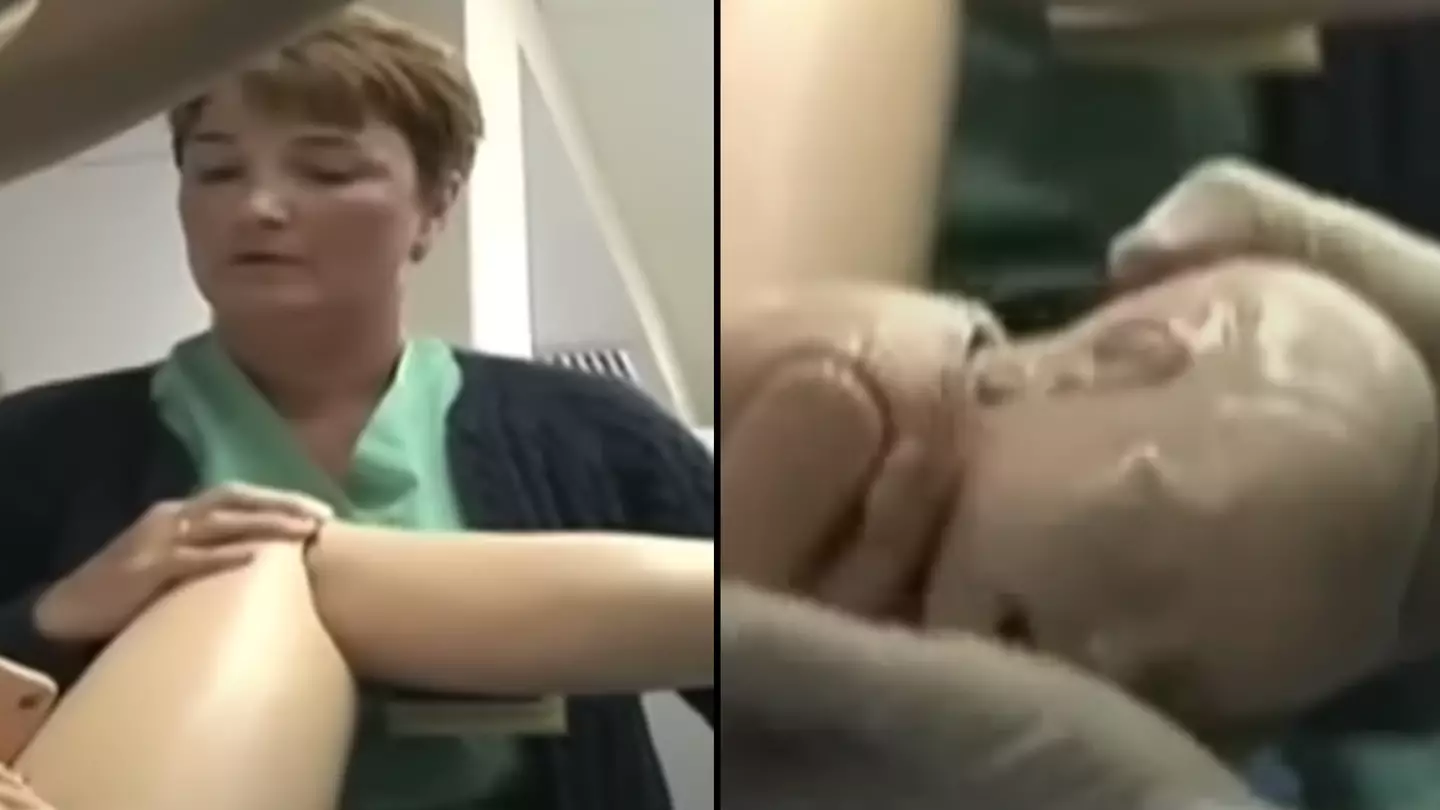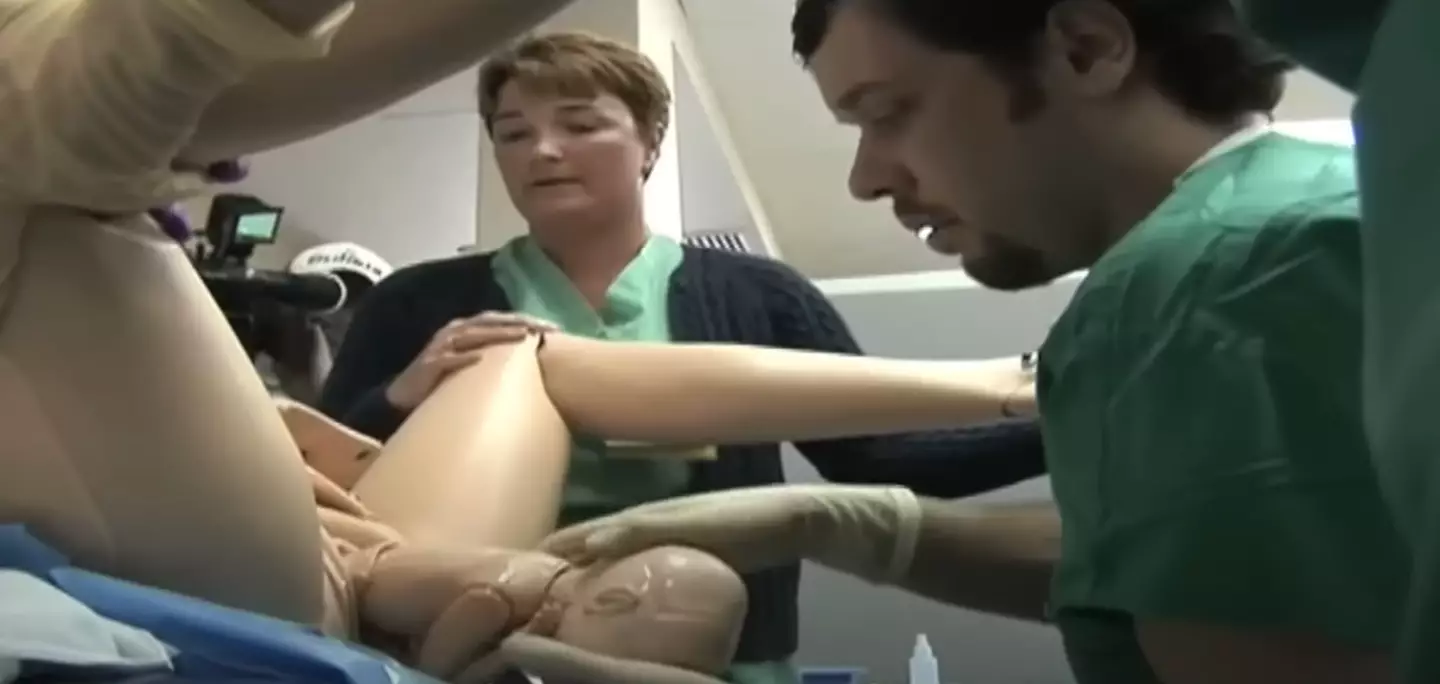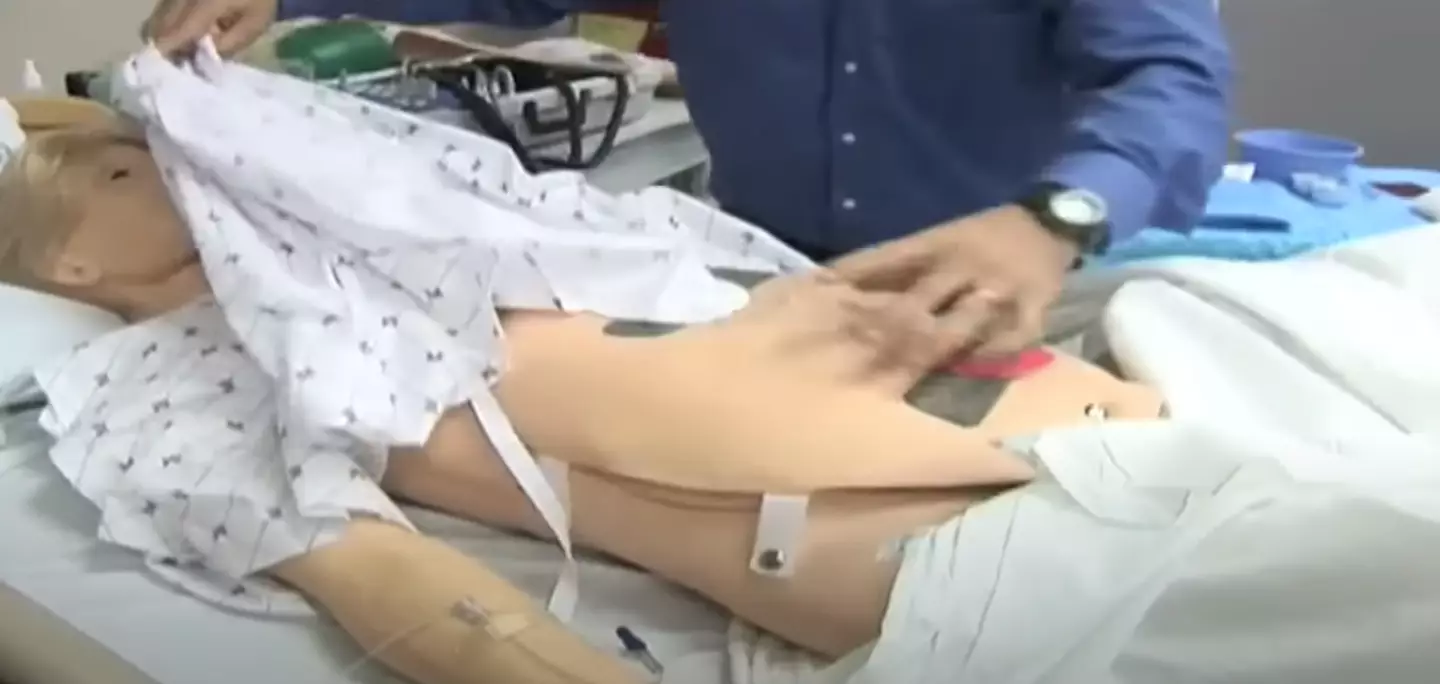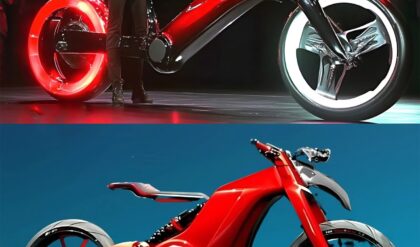The robot is used as an educational tool to familiarise students with the birthing process

A robot is used by medical students to allow them to practice being in the delivery room when a patient’s special day rolls around.
In what may be a weird and uneasy sight for others, technology has progressed enough for students in medicine to practice procedures on them.
It may not be new information to you, but to see it being carried out in real-time might look a bit odd.
You can see what it looks like here:
The use of technology to help the next generation of doctors is not new either, as the video in question is over 15-years-old, and shows the introduction of the ‘pregnant’ robot into the students’ learning.
In the four minute video, that was originally broadcast as a news story on Discovery, the students can be seen communicating with the robot, who was given the name ‘Noelle’, as if it were a real person.
The robot in the video is being used at John Hopkins University, with students being closely watched by the professionals during the process.
All possible details are added to the $20,000 (£16,000) robot, such as an umbilical cord, hooking the robot up to a fetal monitor and an IV, checking her blood levels and even wrapping the umbilical cord from around the baby’s neck – which is a possibility.

The students can be seen delivering the robot baby in the manner that they would be expected to with a real child. (YouTube/Discovery)
Dr. Scott Purinton, a resident OBGYN at John Hopkins Hospital, said that the robot is a ‘great aid for students’, saying that he ‘wished that he would have had earlier in his training’.
He says that not having a practice run means that you aren’t familiar with the manoeuvres, and also praised the fact that the sizes of everything – down to the positioning on the table – was incredibly accurate.
Susan Will, an OB Patient Surgery Nurse, stated: “It’s better to learn and make mistakes on a robot instead of a real person.”
Explaining that she can be used for education purposes, she continued: “Most importantly, we can use her as a mechanism to study the team as they work together during a birth process, and especially during a high-risk situation.”
David Isaza is an engineer that was behind the creation of Noelle, and likened familiarising yourself to the birthing process to learning a new language.

The robot is complex and has extras to prepare students for any mishaps that may happen in a real birthing situation. (YouTube/Discovery)
“You have to learn, pretty much a new language,” he explained.
“Because the terminology is very specific for OBGYN… it’s a learning curve that keeps going up and up and up.”
The robot aims to help students deal with complications, of which 875,000 US women went through with pregnancies on average at the time.
It goes without saying that technology has progressed since 2009 though, and there are now birthing robots that have a lot more features, such as Victoria, who is based in the Royal Hospital for Women’s Simulated and Integrative Learning centre in Randwick, Australia, and also comes from the same company that created Noelle, Gaumard Scientific.
Victoria can have seizures during birth, her pulse can be tracked, her chest raises as she breaths and she can even be offered paracetamol. She can also speak to the trainees too.
The American-made robot can even bleed and urinate, though she costs a hefty $180,000 (£144,000), which the clinic say they’ve gotten their ‘money’s worth’.





